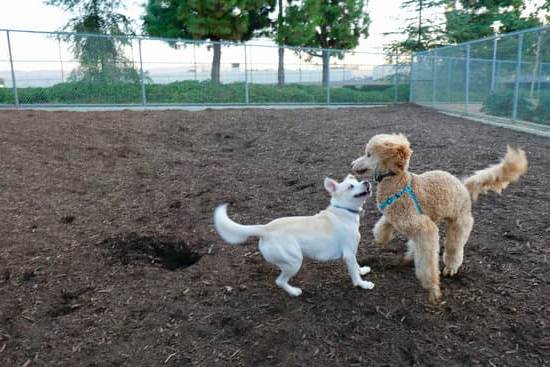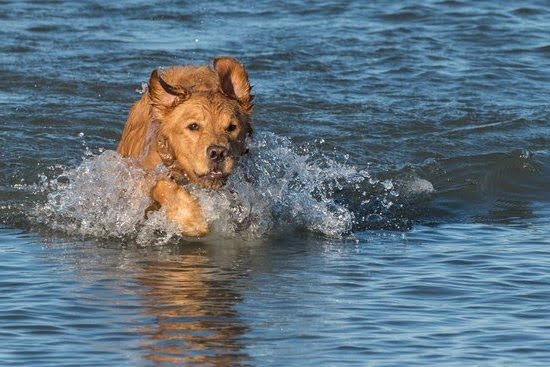Training your dog to find a person can be a valuable skill in various situations, whether it’s locating a lost individual, assisting in search and rescue missions, or simply for additional safety measures. Dogs have an exceptional sense of smell and intuition that make them effective in tracking down people, making them valuable partners when it comes to finding individuals in need.
The benefits of training your dog to find a person are numerous. Beyond the practical applications in search and rescue operations, having this skill can bring peace of mind knowing that your furry companion has the capability to locate someone in case of an emergency. Understanding your dog’s natural abilities, such as their keen sense of smell and intuition, is crucial in harnessing their potential to excel in finding people.
In this article, we will explore the fundamentals of training your dog to find a person, from basic techniques to more advanced methods. By incorporating scent recognition and specialized training exercises, you can enhance your dog’s ability to search for individuals in various environments. Real-life scenarios will also be examined to showcase how trained dogs have successfully located people in critical situations.
Benefits of Training Your Dog to Find a Person
Training your dog to find a person can have numerous practical benefits, especially in critical situations such as search and rescue missions or tracking lost individuals. Dogs are known for their superior sense of smell and intuition, making them invaluable assets when it comes to locating people in various environments. Whether it’s finding a missing hiker in the woods or locating a lost child in a crowded area, a well-trained dog can make all the difference.
One of the key advantages of training your dog to find a person is their ability to cover ground quickly and efficiently. While humans may take hours or even days to search an area thoroughly, a trained dog can do the same job in a fraction of the time.
This speed and accuracy can be crucial in life-or-death situations where every minute counts. Additionally, dogs can access areas that might be challenging for humans to reach, such as rugged terrains or debris-filled spaces.
Moreover, having a dog trained to find a person can provide peace of mind for pet owners who may worry about their loved ones getting lost or going missing. By investing time and effort into training your furry companion for this skill, you not only improve their overall obedience and discipline but also enhance their innate abilities to assist in times of need.
The bond that forms between you and your dog during this training process can also strengthen your relationship and create a sense of trust and reliance on each other.
| Benefits of Training Your Dog | To Find a Person |
|---|---|
| Enhances speed and efficiency | Can access challenging areas |
| Provides peace of mind for pet owners | Strengthens bond between owner and dog |
Understanding Your Dog’s Natural Abilities
Training your dog to find a person is a valuable skill that can be utilized in various situations, from search and rescue missions to locating lost individuals. Understanding your dog’s natural abilities, particularly their keen sense of smell and intuition, is crucial in honing this skill. Dogs have an exceptional sense of smell, with some breeds capable of detecting scents at incredibly low concentrations. This olfactory prowess makes them well-suited for tracking individuals by following their scent trails.
To effectively train your dog to find a person, it is important to tap into their innate abilities and leverage them through proper training techniques. One way to do this is by incorporating scent recognition training into your regimen.
By teaching your dog to associate a particular scent with the individual they are searching for, you can enhance their focus and accuracy in locating the target. Below are some basic steps to get started on training your dog to find a person:
- Begin by introducing your dog to the scent of the individual you want them to find.
- Encourage positive associations with the scent by offering rewards or treats when they show interest in it.
- Gradually increase the difficulty level by having the individual hide while your dog searches for them using the scent as a guide.
In addition to their remarkable sense of smell, dogs also rely on their instincts and intuition when searching for people. They are attuned to subtle cues and changes in their environment that may lead them closer to the target.
By fostering a strong bond with your dog built on trust and communication, you can better harness their intuitive abilities during search exercises. With patience, consistency, and understanding of your dog’s natural abilities, you can train them effectively to find a person in various real-life scenarios.
- Emphasize positive reinforcement during training sessions to keep your dog engaged and motivated.
- Practice regularly in different environments to challenge and strengthen your dog’s tracking skills.
- Seek guidance from professional trainers or behaviorists if you encounter obstacles or need assistance in advancing your dog’s search capabilities.
Basic Training Techniques
Training your dog to find a person can be a crucial skill in various situations, whether you’re on a search and rescue mission or trying to locate a lost individual. The first step in teaching your dog this valuable ability is to focus on basic training techniques. One of the fundamental commands you need to teach your dog is the “find” command.
Start by using this command in a controlled environment with someone your dog is familiar with. Have the person hide while giving the command, and reward your dog when they successfully locate the individual. This helps establish the association between the command and the action of finding a person.
Consistency is key when training your dog to find a person. Practice regularly and gradually increase the difficulty of the hiding spots to challenge your dog’s skills. It’s important to use positive reinforcement, such as treats or verbal praise, whenever your dog successfully completes the task.
This will motivate them to continue learning and improving their abilities. Additionally, make sure to keep training sessions short and engaging to prevent boredom or frustration for both you and your furry companion.
Another essential aspect of basic training techniques for finding a person is creating a strong bond with your dog. Building trust and communication through regular training sessions can greatly enhance their performance in search scenarios.
Understanding your dog’s body language and signals during training will also help you better guide them towards success. Remember that each dog learns at their own pace, so patience and perseverance are key elements in effectively teaching them how to track and find a person.
| Basic Training Techniques | Steps |
|---|---|
| Teach “find” command | Start with familiar individuals hiding |
| Practice consistently | Increase difficulty gradually |
| Use positive reinforcement | Build trust and communication with your dog |
Advanced Training Methods
Urban Search and Rescue Training
One advanced training method that can enhance your dog’s ability to find a person is urban search and rescue training. This type of training focuses on teaching your dog how to navigate through various urban environments, such as buildings, alleyways, and crowded streets, to locate missing individuals. By exposing your dog to different urban settings and obstacles, you can help them develop the skills needed to track down people in challenging situations.
Simulated Scenarios
Another effective way to advance your dog’s search skills is by incorporating simulated scenarios into their training routine. Create scenarios where a person hides or goes missing in different environments, such as a forest, park, or even inside a building. By practicing these scenarios regularly, you can refine your dog’s ability to locate individuals in diverse settings and conditions. Make the training sessions as realistic as possible to prepare your dog for real-life search missions.
Nighttime Training
Nighttime training sessions can also be beneficial for enhancing your dog’s search abilities. In low-light conditions, your dog will rely more on their sense of smell and hearing to locate a person. Use flashlights or other sources of light minimally during nighttime training to encourage your dog to rely on their natural instincts. By practicing searching for individuals in the dark, you can improve your dog’s overall search capabilities and readiness for nocturnal search operations.
Training your dog to find a person requires dedication, patience, and consistent practice. By incorporating advanced training methods like urban search and rescue training, simulated scenarios, and nighttime exercises into your routine, you can enhance your dog’s ability to search for individuals in different environments effectively.
Remember that every dog is unique, so tailor the training methods based on your pet’s strengths and weaknesses. With proper training and guidance, your dog can become a valuable asset in locating missing persons during emergencies or search operations.
Incorporating Scent Recognition
When it comes to training your dog to find a person, one crucial aspect that can significantly enhance their search capabilities is incorporating scent recognition. Dogs have an incredible sense of smell, and they can be trained to identify and track the unique scent of an individual, making their search efforts more targeted and efficient.
By teaching your dog to recognize a specific person’s scent, you can improve their ability to locate the individual you are looking for in various environments and situations.
Scent Introduction and Association
To start incorporating scent recognition into your dog’s training regimen, begin by introducing them to the specific scent you want them to identify. This can be done by using items like clothing or personal belongings that carry the individual’s unique scent.
Allow your dog to sniff and familiarize themselves with the scent while associating it with positive reinforcement, such as treats or praise. Over time, your dog will learn to recognize and associate the person’s scent with a positive experience.
Tracking Exercises
Once your dog has started recognizing the target scent, you can progress to tracking exercises where they follow the scent trail to find the person. Start by creating a simple trail using the scented item, leading your dog in a straight line or zigzag pattern.
Encourage your dog to follow the trail using commands like “Search” or “Find.” As they become more proficient, you can increase the complexity of the trails by adding turns, obstacles, or changes in elevation to challenge their tracking skills.
Real-Life Applications
Scent recognition training can be particularly valuable in real-life scenarios where finding a specific person quickly is crucial. Whether it’s locating a lost child in a crowded area or assisting in search and rescue missions, teaching your dog to recognize and track a person’s scent can make all the difference. By refining this skill through consistent practice and reinforcement, you are equipping your furry companion with a powerful tool for successfully finding individuals when it matters most.
Real-Life Scenarios
In real-life scenarios, trained dogs have proven to be invaluable assets in locating missing persons, whether it be in emergency situations or during meticulous search operations. These highly trained canines exhibit exceptional skills and unwavering dedication to their tasks, often leading to successful outcomes. Let’s delve into some examples that showcase the remarkable abilities of these specially trained dogs.
Here are a few instances where trained dogs have played a vital role in finding individuals:
- During natural disasters such as earthquakes or hurricanes, search and rescue teams deploy highly trained dogs to locate survivors trapped under rubble. These canine heroes use their keen sense of smell to detect human scents amidst the chaos and lead rescuers to those in need.
- In wilderness search operations, where lost hikers or individuals are unable to find their way back, trained tracking dogs excel at following scent trails over vast terrains. Their ability to navigate through rugged landscapes and dense foliage has resulted in many successful reunions between lost individuals and their loved ones.
- In law enforcement efforts, specially trained cadaver dogs are utilized to locate human remains in criminal investigations or disaster areas. These remarkable canines have assisted authorities in solving cold cases, locating missing persons, and providing closure to families.
These examples highlight just a few scenarios where trained dogs have made a significant impact by finding people in critical situations. Their impressive abilities serve as a testament to the effectiveness of proper training techniques and the invaluable role that these four-legged heroes play in search and rescue missions.
By incorporating scent recognition training and enhancing your dog’s natural abilities, you can also prepare your furry companion to assist in locating individuals when needed. Understanding how to train your dog to find a person is not only beneficial for practical purposes but can also potentially save lives in times of crisis.
Troubleshooting and Tips
Training your dog to find a person can be a rewarding and potentially life-saving skill. However, like any training process, it comes with its own set of challenges. One common issue that many dog owners face is maintaining their dog’s focus and motivation during training sessions.
To overcome this challenge, it is essential to make the training fun and engaging for your furry companion. Incorporating rewards, praise, and short training sessions can help keep your dog enthusiastic about learning how to find a person.
Another common obstacle in the training process is ensuring that your dog remains calm and focused when searching for a person in real-life scenarios. It is crucial to gradually expose your dog to different environments, distractions, and challenges to build their confidence and problem-solving abilities. Consistent practice and patience are key in overcoming this challenge as it allows your dog to adapt and improve their search skills over time.
In conclusion, while training your dog to find a person may present various difficulties along the way, the bond you build with your pet through this shared experience is priceless. By understanding your dog’s natural abilities, utilizing basic and advanced training techniques, incorporating scent recognition methods, and providing real-life scenarios for practice, you can equip your furry friend with the skills needed to find individuals in need effectively.
Remember that consistency, positive reinforcement, and perseverance are vital components in successfully training your dog to find a person.
Frequently Asked Questions
How Do You Train a Dog to Find a Missing Person?
Training a dog to find a missing person involves teaching them basic search and rescue techniques. This typically includes scent training, where the dog learns to identify and track a specific person’s scent.
Handlers often use specialized equipment like scent articles or clothing to help the dog differentiate between scents. Positive reinforcement is key in this training process, encouraging the dog to successfully locate the missing individual.
How Are Dogs Trained to Find People?
Dogs are trained to find people through a process called scent work. This involves teaching dogs how to recognize and follow a particular human scent, whether it’s from skin cells, sweat, or other bodily fluids.
Different breeds excel in different types of search and rescue tasks, such as tracking, trailing, or air scenting. Handlers work closely with their dogs to develop these skills through consistent training and practice.
How Do I Train My Dog to Meet People?
Training your dog to meet people can be done through socialization exercises from an early age. Exposing your pup to different environments, situations, and people helps them become comfortable around strangers.
Positive reinforcement techniques like treats and praise can also encourage friendly interactions with new people. Consistent training will help your dog build confidence and manners when meeting others in diverse settings.

Welcome to the blog! I am a professional dog trainer and have been working with dogs for many years. In this blog, I will be discussing various topics related to dog training, including tips, tricks, and advice. I hope you find this information helpful and informative. Thanks for reading!





